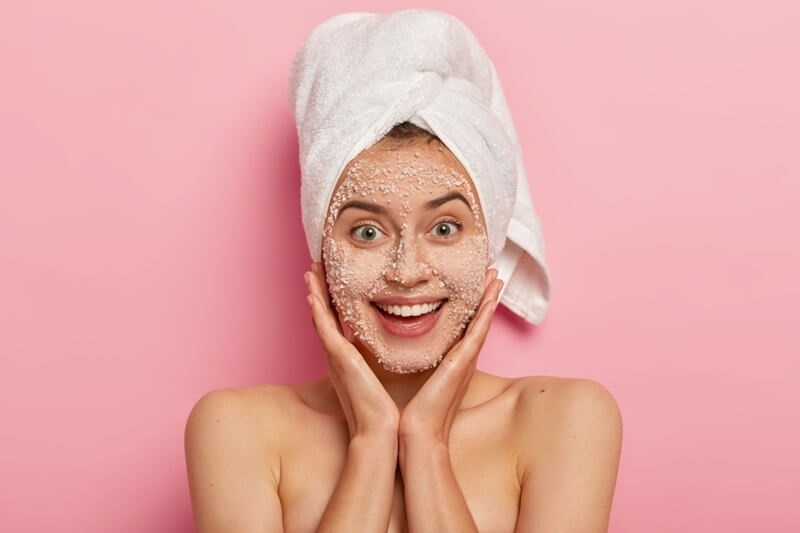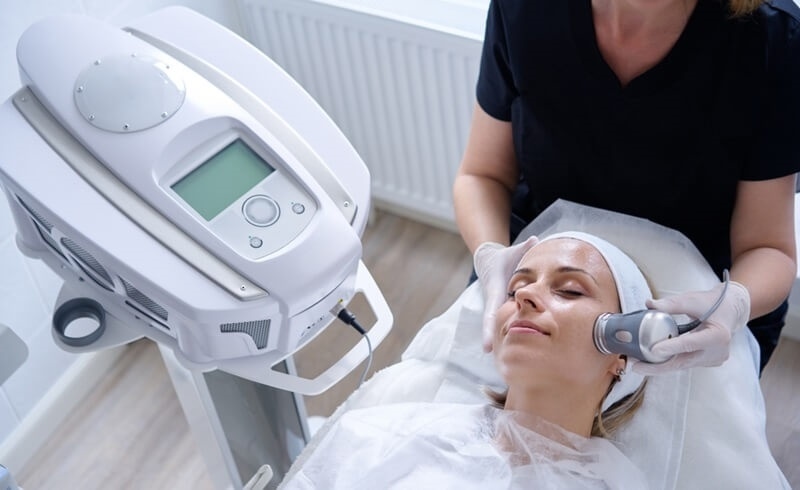
Ever wonder how frequently to exfoliate face without detrimental your pores and skin? You’re now not on by own. From stupid pores and skin and clogged pores to uneven tone and breakouts, loss of exfoliation can make your pores and skin feel lifeless. But exfoliating too regularly—or the usage of the incorrect method—can do more damage than appropriate. The key's finding that perfect balance.
This guide will explain how regularly to exfoliate face, the difference between chemical vs bodily exfoliators, tips for exfoliating for dry pores and skin, and clever exfoliation pointers for sparkling pores and skin. You'll also find out the way to get rid of useless pores and skin thoroughly and the real facial scrub benefits you are probably missing out on.
Exfoliation is the technique of doing away with useless skin cells from the surface of your face. It enables unclogging pores, accelerates mobile turnover, improves texture, and boosts the efficacy of skincare merchandise. Without normal exfoliation, lifeless skin builds up, leading to dullness, breakouts, and hard patches.
But knowing how often to exfoliate your face depends on your pores and skin type, the kind of exfoliator, and even the season.
Let’s break it down via skin kind to decide how frequently to exfoliate face effectively and correctly:
Pro Tip: More exfoliation does not imply higher skin. Listen in your pores and skin. If it feels tight, raw, or irritated, you are probably overdoing it.

Dry skin kinds are often hesitant to exfoliate—but exfoliating for dry pores and skin is not only effective, it’s crucial.
When dead pores and skin build up, moisturizers and serums can’t penetrate efficaciously. Gentle exfoliation removes the barrier and allows hydration to attain deeper layers.
Even in case your skin is flaky, understanding how frequently to exfoliate face (a few times a week for dry skin) can dramatically improve your skincare results.
You’ve possibly seen the controversy: chemical vs bodily exfoliators—but what’s the actual difference?
These include acids like:
They dissolve useless pores and skin cells and promote cellular turnover without scrubbing.
Benefits:
These consist of scrubs, brushes, or devices that remove lifeless skin and pores by hand.
Examples
Advantages:
Be careful, though, as excessive use might damage your skin barrier and pores. When it comes to chemical vs bodily exfoliators, choose the one that your skin can tolerate well and avoid combining the two on the same day unless a dermatologist advises you to do so.
You don’t want to clean your face raw to get that glow. There are gentle approaches to discover ways to remove lifeless skin without inflammation.
Consistent, gentle techniques will train your skin how to get rid of lifeless pores and skin clearly at the same time as preserving its moisture and pH.
Here are some popular exfoliation pointers for glowing pores and skin that paintings no matter your pores and skin type:
Following those exfoliation recommendations for glowing skin guarantees you’ll see results—brighter, softer, smoother pores and skin—without infection.
Despite the upward thrust of chemical peels, there’s nevertheless a place for facial scrub benefits to your habitual—while used efficaciously.
Look for scrubs with satisfactory debris and soothing components like aloe vera or green tea. Over-scrubbing is a common mistake—use no more than 1–2 times in step with week and usually follow with moisturizer.
Including an amazing scrub to your ordinary routine allows strengthen how regularly to exfoliate your face without overwhelming your skin.
Knowing how regularly to exfoliate face, additionally approach adjusting based on climate and seasonal factors.
Change your routines according to the seasons while keeping your main objective in mind: clear, vibrant pores and skin that feels renewed rather than angry.
Exfoliation can be addictive—but there’s this type of factor as too much of an awesome element. If you are unsure how often to exfoliate your face, watch for these signs and symptoms of over-exfoliation:
Your skin has to feel healthy after exfoliating—now not raw. Respect the stability and give it time to get better if you’ve overdone it.
Here’s a newbie-pleasant exfoliation recurring to help manage your skincare:
Follow each with a thick moisturizer
Adjust those depending on how your pores and skin reacts and always prioritize hydration.
Learning how often to exfoliate face is one of the smartest skincare choices you may make. Whether you’re using chemical vs physical exfoliators, that specialize in exfoliating for dry skin, or simply starting to understand facial scrub advantages, don't forget: mild, regular care is key.
By following these exfoliation pointers for glowing skin, adapting your habits to the seasons, and using the proper merchandise, you can enjoy smoother texture, fewer breakouts, and a brighter, clearer complexion—all whilst protecting your pores and skin’s delicate barrier.
It’s now not approximately exfoliating extra, it’s about exfoliating smarter.
This content was created by AI